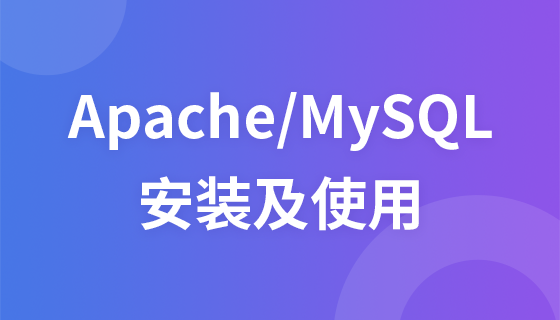
在使用php的gd库进行图像处理,特别是批量缩放或转换图片时,开发者经常会遇到“fatal error: allowed memory size of x bytes exhausted”的错误。这通常发生在脚本需要处理的图片数量较多或单张图片尺寸较大时。尽管脚本可能已经成功处理了部分大尺寸图片,但随着处理数量的增加,内存使用量持续累积,最终导致内存限制被突破。
此问题的根本原因在于,PHP的GD库函数(如imagecreatefromjpeg()、imagecreatetruecolor())在创建图像资源时会占用内存,而这些内存并不会在每次循环迭代结束时自动释放。如果在一个循环中持续创建新的图像资源而不进行显式释放,内存占用会不断累积,直至耗尽PHP允许的最大内存。
解决内存耗尽问题的最有效方法是,在每次图像处理完成后,使用imagedestroy()函数显式地释放与图像资源关联的内存。imagedestroy()函数的作用是销毁由GD函数创建的图像资源,从而回收其占用的内存。
考虑一个典型的批量生成缩略图的PHP脚本:
<?php
ini_set('display_errors', 1);
ini_set('display_startup_errors', 1);
error_reporting(E_ALL);
// 设置脚本最大执行时间,防止超时,但与内存问题无关
set_time_limit(300);
$SourcePath = "../img/";
$TargetPath = "../imgsm/";
$TargetWidth = 400;
$dh = opendir($SourcePath);
if ($dh) {
while (($FileName = readdir($dh)) !== false) {
// 确保只处理JPG文件,并排除目录自身和上级目录
if (preg_match('/\.jpg$/i', $FileName)) {
$SourcePathAndFileName = $SourcePath . $FileName;
$TargetPathAndFileName = $TargetPath . str_replace(".jpg", "sm.jpg", $FileName);
// 检查源文件是否存在且可读
if (!file_exists($SourcePathAndFileName) || !is_readable($SourcePathAndFileName)) {
error_log("Warning: Source file not found or not readable: " . $SourcePathAndFileName);
continue; // 跳过当前文件
}
list($SourceWidth, $SourceHeight) = getimagesize($SourcePathAndFileName);
if ($SourceWidth === false || $SourceHeight === false) {
error_log("Warning: Could not get image size for: " . $SourcePathAndFileName);
continue; // 跳过无法获取尺寸的图片
}
$TargetHeight = floor($SourceHeight * $TargetWidth / $SourceWidth);
// 创建目标图像的真彩色画布
$thumb = imagecreatetruecolor($TargetWidth, $TargetHeight);
if ($thumb === false) {
error_log("Error: Could not create true color image for thumbnail.");
continue;
}
// 从源文件创建图像资源
$source = imagecreatefromjpeg($SourcePathAndFileName);
if ($source === false) {
error_log("Error: Could not create JPEG image from: " . $SourcePathAndFileName);
// 即使source创建失败,thumb可能已创建,也需要释放
imagedestroy($thumb);
continue;
}
// 缩放图像
imagecopyresized($thumb, $source, 0, 0, 0, 0, $TargetWidth, $TargetHeight, $SourceWidth, $SourceHeight);
// 保存缩略图
imagejpeg($thumb, $TargetPathAndFileName);
// 关键步骤:释放图像资源,避免内存累积
imagedestroy($thumb);
imagedestroy($source);
}
}
closedir($dh); // 关闭目录句柄
} else {
error_log("Error: Could not open source directory: " . $SourcePath);
}
?>在上述代码中,imagedestroy($thumb); 和 imagedestroy($source); 是解决内存问题的关键。它们确保了在每次循环迭代结束时,由imagecreatetruecolor()和imagecreatefromjpeg()创建的图像数据所占用的内存被及时回收,从而避免了内存的无限累积。
立即学习“PHP免费学习笔记(深入)”;
尽管imagedestroy()是处理循环中内存问题的首选方案,但在某些情况下,例如处理单张极高分辨率的图片时,即使进行了显式释放,PHP默认的内存限制也可能不足以容纳单次操作所需的内存。在这种情况下,可以考虑临时或永久地增加PHP的内存限制。
可以通过以下两种方式调整memory_limit:
在脚本中设置(临时): 在PHP脚本的开头,使用ini_set()函数来增加内存限制。
ini_set('memory_limit', '256M'); // 将内存限制设置为256MB,或根据需要设置为更大值,如 '512M'这种方法只对当前脚本有效,并且其值不能超过php.ini中memory_limit的master值(如果PHP在安全模式下运行,ini_set可能被禁用)。
修改php.ini文件(永久): 找到你的php.ini文件(通常位于PHP安装目录下或Web服务器配置的路径中),搜索memory_limit,并修改其值。
memory_limit = 256M ; // 或更高,例如 512M
修改php.ini后,需要重启Web服务器(如Apache、Nginx)或PHP-FPM服务才能使更改生效。
注意事项:
在PHP中进行图像处理时,尤其是批量操作,内存管理是至关重要的。通过在每次循环迭代中显式地使用imagedestroy()函数释放图像资源,可以有效避免内存累积导致的耗尽问题。当单次图像操作所需的内存超过默认限制时,再考虑通过ini_set()或修改php.ini来适当提高memory_limit。正确的内存管理实践不仅能确保脚本的稳定运行,还能提高其性能和资源利用效率。
以上就是PHP图像处理中的内存溢出与优化实践的详细内容,更多请关注php中文网其它相关文章!

PHP怎么学习?PHP怎么入门?PHP在哪学?PHP怎么学才快?不用担心,这里为大家提供了PHP速学教程(入门到精通),有需要的小伙伴保存下载就能学习啦!




Copyright 2014-2025 https://www.php.cn/ All Rights Reserved | php.cn | 湘ICP备2023035733号